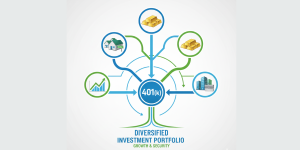Table of Contents
Planning for $10k/month in retirement is a goal many Americans share, representing a comfortable lifestyle that balances financial security with enjoyment. If you’re wondering whether this spending level is realistic for your situation, you’re asking the right questions. Understanding how to structure your finances to support $10k/month in retirement requires careful planning across multiple dimensions: your savings, investment strategy, income sources, and expense management.
This comprehensive guide will walk you through the essential factors that determine whether $10k/month in retirement is achievable for you. We’ll explore the portfolio size you’ll need, how to generate consistent income, what expenses typically consume this budget, and strategies to make your money last throughout your retirement years. Whether you’re just starting to plan or you’re close to retirement, understanding these principles will help you build a realistic roadmap.
The journey to spending $10k/month in retirement starts with understanding that this translates to $120,000 in annual expenses. While this might seem straightforward, the reality involves balancing withdrawal rates, investment returns, inflation protection, tax implications, and longevity planning. Here are the key points you will learn:
- Calculating the portfolio size needed for sustainable $10k/month spending
- Calculating the portfolio size needed for sustainable $10k/month spending.
- Diversifying income sources beyond just savings to reach your monthly target.
- Planning early for healthcare costs within your retirement budget.
- How investment strategy affects your ability to maintain monthly spending.
- Preparing for market volatility and implementing safe withdrawal rates.
- Considering location and longevity when planning your retirement income.

How to Plan for $10k/Month in Retirement: Budget and Income Strategy
When you’re planning for retirement, one of the most important questions you might have is, “Can I achieve 10k/month in retirement?” Understanding this can help you live comfortably without the worry of running out of money. Let’s explore some factors that will influence your spending in retirement.
Calculating Your Portfolio Needs for $10k/Month
To sustain 10k/month in retirement, you need to understand the portfolio size required to generate this income safely. Using the widely accepted 4% withdrawal rule, spending $120,000 annually ($10k/month in retirement) would require a portfolio of approximately $3 million. This calculation comes from dividing your annual spending by 0.04, giving you the principal amount needed at retirement.
However, the 4% rule is a guideline, not a guarantee. Many financial advisors now suggest more conservative withdrawal rates of 3% to 3.5% for longer retirements or during periods of market volatility. If you use a 3.5% withdrawal rate for your 10k/month in retirement goal, you’d need approximately $3.43 million. This higher threshold provides an additional safety buffer against sequence of returns risk and ensures your portfolio can withstand market downturns in early retirement.
Mapping Your Path to $10k/Month in Retirement
First, think about what you want your retirement to look like. Do you dream of traveling the world, or do you prefer a quiet life at home? For instance, consider a couple who have saved $2.5 million and receive Social Security benefits. With smart planning, they can target $10k/month in retirement by combining portfolio withdrawals with guaranteed income sources. This amount covers basic needs and allows for a comfortable lifestyle with additional extras.
When planning for $10k/month in retirement, it’s essential to understand where this money typically goes. Housing costs often represent the largest expense category, potentially consuming $2,500-3,500 monthly depending on your location. This includes mortgage payments (if not paid off), property taxes, homeowners insurance, maintenance, and utilities. Many retirees find that eliminating their mortgage before retirement significantly eases the path to sustainable $10k/month in retirement spending.
Healthcare costs form another substantial portion of your budget, typically ranging from $1,200-2,000 per month for a couple. This covers Medicare premiums (Parts B and D), supplemental insurance, out-of-pocket costs, dental, vision, and long-term care insurance. These expenses tend to increase as you age, so building in escalation factors is crucial when planning long-term.
Income Sources to Reach $10k/Month in Retirement
Successfully achieving $10k/month in retirement rarely depends on portfolio withdrawals alone. Besides your savings, retirement income planning should include Social Security, pensions, and other income sources. A multi-source income strategy provides greater stability and reduces the strain on your investment accounts.
Social Security typically forms the foundation, potentially providing $3,000-5,000 monthly for a couple who both qualify for benefits. The timing of when you claim Social Security retirement benefits dramatically impacts this amount—delaying until age 70 can increase your benefit by up to 32% compared to claiming at full retirement age.
If you have a pension, this guaranteed income source significantly improves your ability to maintain $10k/month in retirement. Even a modest pension of $1,500-2,000 monthly reduces your required portfolio withdrawals substantially. Some retirees also generate income through rental properties, which can provide $1,000-3,000 monthly depending on your real estate holdings. Rental income offers inflation protection as rents typically rise over time, though it comes with management responsibilities and occasional vacancy periods.
Part-time work or consulting in early retirement can bridge the gap until Social Security reaches its maximum value at age 70. Many retirees discover that working 15-20 hours weekly not only provides income but also eases the psychological transition into retirement. This “phased retirement” approach might contribute $1,500-2,500 monthly while reducing the need to tap investment accounts during vulnerable early retirement years.
Annuities represent another tool for creating guaranteed income to support $10k/month in retirement. While annuities have drawbacks including fees and reduced flexibility, allocating a portion of your portfolio to an immediate annuity can create pension-like income that covers essential expenses. This approach, called a “floor and upside” strategy, ensures your basic needs are always met regardless of market performance.
Understanding IRS retirement plan rules helps you maximize tax advantages from various income sources. The key is coordinating these various sources strategically. A financial advisor can help optimize the timing of Social Security claims, pension elections, retirement account withdrawals, and other income sources to maximize tax efficiency while supporting your $10k/month in retirement goal.

Healthcare Planning for a $10k/Month Retirement Budget
Healthcare is a big cost for many retirees. You’ll need to think about things like Medicare, extra insurance, and money for unexpected medical needs. When planning for $10k/month in retirement, healthcare costs typically consume 15-20% of your budget. It’s a good idea to figure out these expenses early so you’re not surprised later and can maintain your target monthly spending.
Medicare provides essential coverage starting at age 65, but it doesn’t cover everything. You’ll need to plan for premiums, deductibles, and copayments. Supplemental insurance (Medigap) or Medicare Advantage plans can help fill coverage gaps. Additionally, dental, vision, and hearing care aren’t covered by traditional Medicare, requiring separate planning.
Long-term care represents a significant potential expense that can derail retirement plans. Whether through insurance, self-funding, or a combination approach, addressing this risk is essential for protecting your $10k/month in retirement lifestyle. Health Savings Accounts (HSAs) can provide tax-advantaged savings specifically for medical expenses if you’re still working and have a high-deductible health plan.
Investment Strategies to Generate $10k/Month in Retirement
Your investment strategy must evolve as you transition from accumulation to distribution phase. To generate $10k/month in retirement ($120,000 annually), you’ll typically need a portfolio of $2.5-3.5 million, depending on your withdrawal rate and other income sources. Supporting this spending level requires balancing three critical objectives: generating current income, maintaining growth to outpace inflation, and preserving capital to prevent portfolio depletion.
A dividend-focused strategy can provide substantial income while maintaining growth exposure. High-quality dividend-paying stocks and funds might generate 2-3% annual yield, contributing $60,000-90,000 annually from a $3 million portfolio. This dividend income reduces the amount you need to withdraw from principal, helping sustain your $10k/month in retirement spending during market downturns. However, dividends aren’t guaranteed and can be cut during economic stress, so they shouldn’t be your only income source.
Implementing smart retirement withdrawal strategies can minimize taxes and extend portfolio longevity. Rebalancing becomes critically important during retirement. As you withdraw funds for your $10k/month in retirement expenses, you’ll naturally disrupt your target allocation. Regular rebalancing—perhaps quarterly or semi-annually—ensures you maintain appropriate risk exposure and systematically sell high-performing assets while they’re strong.
Withdrawal Strategies to Sustain $10k/Month in Retirement
The economy can change, and this can affect your investments. Learning to protect against market volatility is essential for retirement security. To help protect your money and maintain $10k/month in retirement, you might follow a rule like the “4% rule.” This rule suggests that if you start by taking out 4% of your savings each year, adjusted for inflation, your money should last through a 30-year retirement.
For a $3 million portfolio, this means you could withdraw approximately $120,000 a year, or about $10,000 per month. However, the 4% rule is a starting point, not a rigid formula. Your actual safe withdrawal rate depends on factors including your retirement age, life expectancy, portfolio allocation, market conditions at retirement, and flexibility to adjust spending.
Dynamic withdrawal strategies offer more flexibility than the static 4% rule. These approaches adjust your annual withdrawals based on portfolio performance, potentially taking more when markets are strong and tightening the belt during downturns. This flexibility can extend portfolio longevity while still maintaining an average spending level close to your $10k/month in retirement target.
If your portfolio is larger, you might explore retirement spending with a $2.5 million portfolio for additional flexibility. Sequence of returns risk—the danger of experiencing poor market returns early in retirement—represents one of the biggest threats to sustainable withdrawals. Strategies to mitigate this include maintaining a cash reserve, using bond tents, or employing a rising equity glide path in early retirement.
Location and Longevity: Protecting Your $10k/Month Retirement Income
Where you choose to live in retirement can change whether $10k/month in retirement feels abundant or tight. Some places are more expensive than others. In lower cost-of-living areas like the Southeast, Midwest, or smaller cities, $120,000 annually can support an upper-middle-class retirement with travel, dining out, and hobbies. The same spending in high-cost areas like San Francisco, New York City, or expensive resort towns might only cover basic needs.
Many retirees strategically relocate to stretch their $10k/month in retirement further. States with no income tax—Florida, Texas, Nevada, Tennessee, Washington—can save you $10,000-15,000 annually compared to high-tax states like California or New York. Property taxes vary enormously, from under $1,000 annually in some states to $10,000+ for similar homes in others. These geographic arbitrage opportunities can significantly extend your portfolio’s longevity.
International retirement destinations offer even more dramatic cost-of-living advantages. Countries like Portugal, Mexico, Costa Rica, and Panama attract American retirees who find their $10k/month in retirement provides a luxury lifestyle abroad. However, international retirement introduces complications around healthcare access, currency fluctuation, tax treaties, and distance from family that require careful evaluation.

Setting Financial Goals Beyond $10k/Month in Retirement
Finally, think about any special plans you have for your retirement money beyond your regular $10k/month budget. For those with higher lifestyle expectations, understanding how much you need to spend $10k/month in retirement requires careful planning and a larger portfolio. Maybe you want to buy a new car, travel extensively, or help your grandchildren with college. Each goal will need its own plan and budget on top of your monthly baseline.
Legacy planning represents another important consideration. If you hope to leave an inheritance or support charitable causes, this reduces the amount available for your own spending. Conversely, if you plan to spend down your assets completely, you might be able to sustain a higher lifestyle than someone preserving wealth for heirs.
Major one-time expenses like home renovations, new vehicles, or bucket-list trips require planning beyond your monthly budget. Creating a separate reserve for these irregular expenses prevents them from derailing your sustainable $10k/month in retirement withdrawals. The Department of Labor retirement resources provide valuable information on protecting your retirement savings and understanding your rights.
Achieving and sustaining $10k/month in retirement is an attainable goal with proper planning, realistic expectations, and disciplined execution. Understanding “$10k/month in retirement” involves looking at many different factors: portfolio size requirements, income diversification, expense management, investment strategy, withdrawal planning, and geographic considerations.
The key factors determining your success include starting with an adequate portfolio (typically $2.5-3.5 million depending on other income sources), optimizing Social Security and other guaranteed income, maintaining a balanced investment strategy, and managing expenses strategically. Begin by calculating your specific portfolio needs based on your expected Social Security, pension, and other income sources.
If there’s a gap between your current trajectory and your $10k/month in retirement goal, you have several options: increase savings now, plan to work part-time in early retirement, adjust your spending expectations, or consider geographic arbitrage to lower costs. Work with a qualified financial advisor who can model different scenarios, stress-test your plan against market volatility, and help you optimize tax strategies.
The difference between efficient and inefficient planning can mean tens of thousands of dollars over a multi-decade retirement. Remember that your $10k/month in retirement plan isn’t static—it requires regular review and adjustment. Major life events, market changes, tax law modifications, and health developments may necessitate course corrections.
If you are ready to tackle your retirement planning challenges with a professional, Calamita Wealth Management specializes in personalized, fee-only financial planning for individuals and families in Charlotte, NC and beyond. Our comprehensive approach addresses the full spectrum of retirement planning challenges, helping you build confidence in your financial future.
Contact us today to schedule your consultation and start building a retirement strategy designed for your success.





